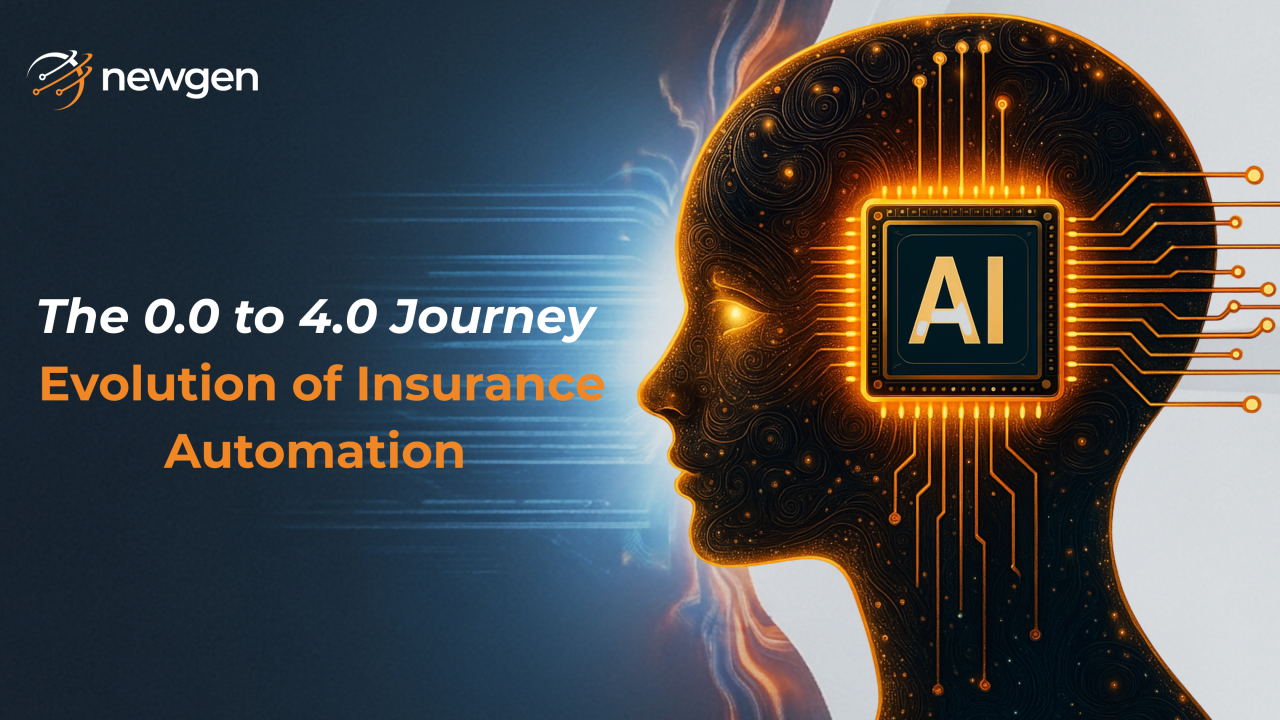Connect with us on LinkedIn
Newgen Software is a globally recognized provider of Low Code Digital Transformation Platform
The era of AI-as-a-tool is over
The chapter on AI as a passive tool is closed. We are transitioning from experimenting with AI to relying on it. Business leaders are now embedding it at the core of the enterprise to drive most essential functions with new intelligence and efficiency. The shift is fundamental. However, for an industry i.e. built on trust, automation without accountability isn’t transformation, it’s turbulence.
In the past few years, banks have gone from experimenting with AI to embedding it deep within mission-critical operations, such as credit decisioning, onboarding, and fraud detection. With scale comes intense scrutiny.
Regulators look for auditable models, and customers are no longer impressed by speed alone; they demand transparency in the decisions that affect their financial lives. And, forward-thinking boards are recognizing that while AI delivers velocity, it is trust that delivers lasting value.
The Shift from Intelligence to Integrity
The conversation at the highest levels of our industry is evolving. Leading analysts from Gartner and Forrester confirm, we are collectively entering a new chapter in AI maturity, the age of accountability. According to Gartner’s 2025 research, banks are moving beyond pilots to focus on AI governance, risk management, and explainability, the pillars that will define scalable, sustainable success.
This urgency is magnified by the sheer scale of data we steward. Forrester pointed out that financial institutions now store more data than any other industry, with over half managing several petabytes across fragmented systems. This immense ‘data gravity,’ creates a powerful pull, making robust data lineage, auditability, and explainable decisioning important. The lesion is clear, an AI’s outcome is only as credible as the data that fuels it.
Together, these findings point to a clear truth, AI leadership in banking is no longer about capability, it’s about credibility.
Why Explainability Matters More Than Ever
Every decision made by AI tells a story. When it’s a loan approval, a flagged transaction, or a delayed claim, the ‘why’ behind the outcome is it defines whether customers trust the system or question it.
The value of this clarity extends beyond compliance checkboxes. For forward-thinking banks, championing explainability is directly strengthening their public image and credibility.
When the reasoning is clear:
- Outcomes become defensible
- Potential biases become detectable
- A cycle of continuous improvement becomes ingrained
The growing gap between model complexity and regulatory clarity is precisely what makes explainable AI a quiet but powerful competitive advantage.
Governance: The Invisible Architecture of Trust
Governance isn’t bureaucracy; it’s an important architecture that drives innovation to thrive safely and at scale. And, the banks that get it right understand one thing i.e., they can’t scale AI sustainably if they can’t supervise it with clarity. Progressive leaders are ditching static checklists for governance that’s and team-based.
- Cross-functional Oversight: AI is a shared responsibility. Risk and compliance help manage it from the beginning
- Explainability by Design: Transparency tools like model cards and interpretability dashboards are being built directly into systems, not added later to appease auditors
- Human-in-the-loop Reviews: In high-risk areas like credit and AML, human judgment remains the final safeguard, complementing machine precision
- Continuous Monitoring: Automated drift detection, fairness checks, and anomaly tracking ensure that models evolve safely as data and behavior shift
- Immutable Audit Trails: Every input, output, and override is recorded, ensuring a single source of regulatory truth
The Human Side of Responsible AI
Technology gives us the parts, but people build something trustworthy. For banks, using AI responsibly is more about changing how teams think and work together than it is about new software. This translates into:
- Training teams to ask questions. Employees are learning how AI models work, when to doubt their answers, and who is responsible for the outcome
- Creating a shared language. Risk and compliance staff are learning the basics of how AI is built. At the same time, tech experts are learning the ‘why’ behind the rules
- Turning rule-making into teamwork. Governance is no longer about just saying ‘no.’ It’s becoming a central meeting point where experts in ethics, technology, and business strategy work together
The Newgen Lens: Responsible AI in Action
Responsible AI is the architecture of everything we build at Newgen. It’s not an add-on, but the core design that makes our agents’ work fully transparent and trustworthy.
- Explainable Decisions: Every outcome can be traced back to its source and logic
- Trusted Data: Agents use only approved, permission-based data
- Agentic Shield: Real-time monitoring enforces rules and flags issues for human review and validation
- Journey-level Oversight: Agents enrich customer journey while strengthening compliance
This approach lets banks scale AI with confidence, balancing innovation with integrity.
The 2026 Mandate: Drive Innovation, Responsibly
Success in banking will come from smart governance, not just fast automation. This means focusing on:
- Ethical outcomes, not just accurate ones
- Explainable results, not just fast answers
- Trusted automation, not just functional automation
The future of banking isn’t about machines replacing humans; it’s about humans defining the guardrails that keep machines aligned with purpose.
You might be interested in




